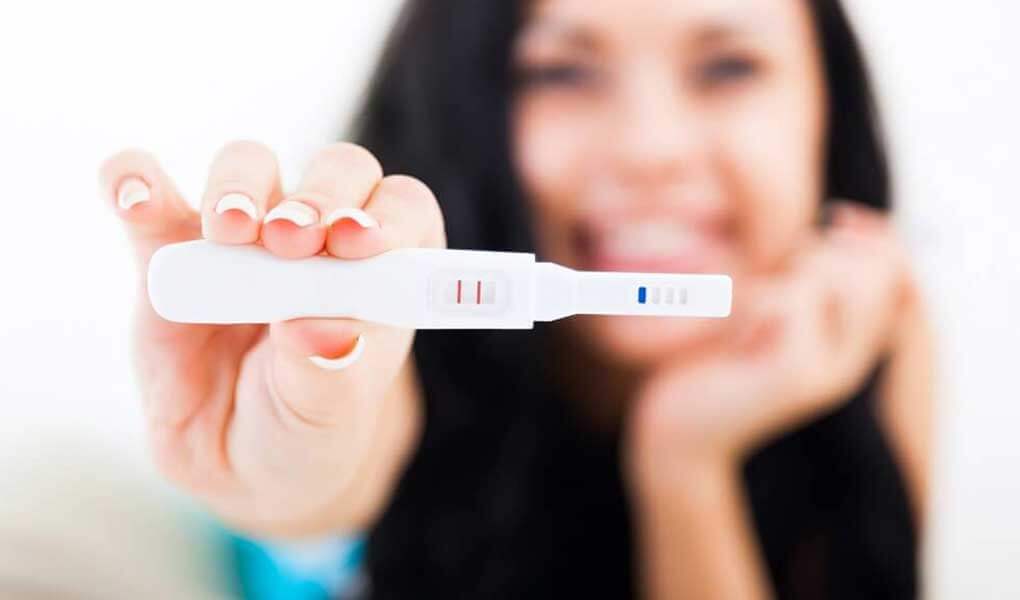Follow Us!
Patient stories, informative videos and much more on our social media accounts

Known commonly as menstrual cramps, or dysmenorrhea, it occurs during the menstrual period or just before its onset, usually in the lower abdomen and pelvic area.
Dysmenorrhea can be defined as pelvic pain that develops before or during the menstrual period. While the pain is often located in the lower abdomen, it can also be felt in the back, waist, and legs.
In addition to regular menstrual cramps, a person may experience nausea, vomiting, diarrhea, headaches, palpitations, and mood changes.
This condition is very common and can significantly reduce the quality of life. Studies show that 75% of young women and 20-50% of adult women experience dysmenorrhea.
In about 20% of all dysmenorrhea cases, the pain is intense enough to interfere with daily activities.
While painful periods or menstrual cramps usually occur as a side effect of the normal menstruation process, in some cases, it can develop due to other health issues.
Dysmenorrhea is categorized into two different types: primary and secondary. Before addressing the frequently asked question, “What helps with painful periods?” it’s important to first answer “What is Painful Periods (Dysmenorrhea)?”
Pain or cramps in the lower abdomen during or before menstruation is referred to as dysmenorrhea in medical terms.
Known as menstrual cramps, this condition can also be accompanied by symptoms such as nausea, vomiting, diarrhea, headaches, palpitations, fatigue, and low blood pressure.
In individuals with migraines, headaches may be much more intense. The pain felt in the pelvic region can radiate to the lower back, waist, and legs. The discomfort usually begins before the menstrual period and continues intermittently, with the intensity gradually decreasing over 1 to 3 days.
Dysmenorrhea can be defined as the sensation of uterine contractions, which are part of the healthy menstrual mechanism. When pregnancy does not occur, the thickened endometrial lining sheds and returns to its previous state as the uterus muscles contract regularly.
The contractions are triggered by the release of lipids called prostaglandins from the uterine area. These contractions also help limit the amount of bleeding. Uterine contractions are stronger in some individuals compared to others.
It is believed that painful periods occur due to an excessive release of prostaglandins or sensitivity to this compound. Painful periods that are cramp-like or aching can be classified into primary and secondary types based on the underlying causes. Before discussing the causes of painful periods, let’s answer the question “What are the symptoms of dysmenorrhea?”
The most noticeable symptom of dysmenorrhea is painful cramps in the pelvic area, i.e., the lower abdomen. Occasionally, the pain can be severe, with spasms, and may vary in intensity and duration. It can also be mild but long-lasting.
The pain may radiate to the waist and thighs, and the intensity and nature of the pain can vary each menstrual cycle. In addition to menstrual cramps, individuals may experience fatigue, nausea, dizziness, and headaches.
It’s also common for painful periods to be accompanied by diarrhea. The discomfort usually begins with the start of menstruation, but in some women, it may be felt a few days before the bleeding begins.
The pain is typically more intense on the heaviest days of the period. Normally, these symptoms last between 12 to 24 hours, but in severe cases, they can last for several days.
Dysmenorrhea generally tends to decrease with age. Most women notice a significant reduction in pain after their first childbirth.
Dysmenorrhea, or painful periods, is categorized into two different types: primary (also known as primary dysmenorrhea) and secondary (also known as secondary dysmenorrhea).
Primary dysmenorrhea is a type of menstrual pain that occurs without any underlying health problems and is typically associated with painful periods during menstruation. This common gynecological issue is experienced by 50% of women after puberty.
Pain that starts with the first period can continue into the 40s, but it is most intense between the ages of 10 and 20. Secondary dysmenorrhea, on the other hand, is defined as pain caused by an underlying health condition.
Investigating the underlying causes of secondary dysmenorrhea is important. Common causes include endometriosis, pelvic infections, cervical stenosis, fibroids, and uterine positional abnormalities. In cases of secondary dysmenorrhea, the pain typically starts before menstruation begins.
This type of dysmenorrhea is less common than primary dysmenorrhea. The pain tends to be cramp-like or spasmodic and usually resolves within 48 to 72 hours. However, in some cases, the pain may begin before the period, intensify during menstruation, and persist for a while after the period ends.
The pain, which is often dull, is typically deeper and may radiate to the back, waist, and legs. Secondary dysmenorrhea tends to decrease with age and may improve after the first childbirth.
Menstruation occurs when the thickened endometrium starts to shed and return to its normal state, accompanied by the release of prostaglandins. These compounds trigger uterine contractions that help expel tissue and blood from the uterus. It is believed that excessive prostaglandin release or an overreaction of the uterus to this compound causes primary dysmenorrhea.
Secondary dysmenorrhea is caused by conditions like endometriosis, pelvic infections, cervical stenosis, fibroids, and uterine positional abnormalities. In some cases, the use of an IUD (intrauterine device) may also lead to secondary dysmenorrhea. The question “What is the symptom of painful periods?” can be answered as follows.
However, bleeding outside of the menstrual period can occur due to hormonal changes, the use of birth control pills, infections, sexually transmitted diseases, polyps, and menopause. Painful periods can also be caused by different factors such as intermenstrual bleeding.
For painful menstrual cramps, regional heat applications can be helpful. Applying a hot water bottle to the abdomen, taking a warm bath, and maintaining a healthy, balanced diet can help reduce pain.
Consuming a diet rich in B vitamins and magnesium may help alleviate menstrual cramps. If other symptoms such as headaches accompany the pain, it is suggested to limit salt intake.
Limiting chocolate, tea, coffee, and carbonated beverages before menstruation can help prevent menstrual pain. Regular exercise is another effective way to reduce menstrual cramps.
Exercises aimed at strengthening the muscles, along with breathing exercises, are also recommended. Another frequently asked question is, “How to get rid of painful periods?”
Moderate dysmenorrhea symptoms can generally be relieved with pain relievers taken under medical supervision. Painkillers are typically recommended to be taken one day before the period begins and can help reduce the severity of the pain.
For more severe pain, in addition to painkillers, applying heat to the abdomen can help alleviate the discomfort. In cases of intense pain, a doctor may administer an injection of pain relief medication.
Let us call you as soon as possible regarding the issues you want to consult.


